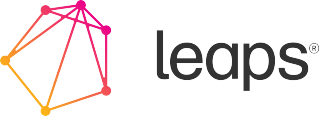Generating diverse and innovative ideas is a critical start to solving any problem or challenge.
Last week, we shared the Leaps™-developed technique Double 4s™, which is specifically developed to boost this initial idea generation processes. The technique is guided by divergent thinking principles, and does a great job of generating numerous and creative ideas. It also builds group cohesion and rapport among both creatives and ‘non-creatives’. If you missed our discussion of Double 4s™, learn about it here .
This week, we will be sharing a complementary technique – and a fundamental principle used throughout Leaps™ days – called 3-5-10™.
At Leaps™, we deeply believe in the value of incorporating diverse voices, and creating spaces where all individuals can come to the table comfortably and equally. 3-5-10™
takes these goals and principles, and operationalizes them into a simple yet effective process. Here’s how you can get started.
3-5-10™: Working alone, together
The Leaps™ 3-5-10™ technique is guided by the research-backed principle that silent, solo idea creation followed by structured opportunities to share is more effective than ‘out-loud’ group ideation. We weave this research with the knowledge that collaboration and group buy-in are crucial in the contexts where we work. 3-5-10™ is beautifully simple and especially useful in gathering group data, insights, information and ideas in a lightning fast way. To implement this technique, you will need paper or sticky notes for each participant, and bold pens or markers.
Before jumping into the below, be sure to clearly define the challenge or task that will be the focus of the group. Ensure that each participant understands how their input, ideas, and insights should apply to the challenge.
[Tip: You can often use a short videos related to the challenge to get participants in the best mindset.
Two particular videos we use are:
To help relax groups before ideation: Where good ideas come from:
To help with big, bold and ambitious thinking: What is Moonshot thinking?
- First, participants are asked to spend three minutes working in isolation and silence on the given challenge or problem, recording the ideas and solutions they come up with, in simple note form. There’s no minimum or maximum number of ideas, and participants are encouraged to freely jot ideas down however they wish, knowing they won’t be asked to share them to the whole group in raw form.
People often jump to trying to share information and ideas before they’ve worked out their thoughts. This is ineffective at best, wastes time and can often be counterproductive.
By enforcing three minutes of solo focus, each participant can harness their own ideas without cognitive bias or concern for how they will be received by the group.
Often, listening to others who are ‘quick-starts’ means they often have no opportunity for self-reflection before things get flowing.
- Once participants have written down their ideas, they pair up to share their ideas with a partner for five minutes. During this time, they are looking for commonalities between ideas, flagging those that are most interesting, and otherwise working with their partner to hone the ideas they came up with individually. New ideas often emerge in this stage, and are quite welcome. The pairs anonymously record their best ideas on sticky notes, and post these on a wall for the entire group to review.
By having two people share one-on-one, we maintain a small enough group that both voices are heard.
This period allows for incomplete ideas to come together and form the next steps of a more full-fledged and enriched ideas.
- Next, participants are given ten minutes to read the ideas that were generated by the collective, review and consolidate duplicate ideas, and group common themes together. We often offer the opportunity to ask questions, making sure that they are clarificatory questions, not judgemental ones. This can produce more diversity and quality of information, insights and ideas.
- We then often encourage the use of an additional technique to prioritise, consolidate and focus the vast amounts of information. We like the technique ‘Dot Vote’ – In this optional step, everyone is asked to identify which two or three ideas are key (based on an agreed-upon set of evaluation criteria for the specific challenge). They note their top two/three ideas by marking ticks or, ideally, placing small sticky dots directly on the notes. This enables them to quickly and silently record their votes and harnesses the energy of the entire group.
To minimize the self-censoring that often occurs when it comes to sharing in front of a large group, this phase of anonymous sharing and quiet review of ideas is crucial. The anonymity also gives participants outside of traditional “speaker” roles to voice their ideas. For example, rather than hearing from those at the top of the company, or individuals thought of as “creative,” this stage allows for the ideas of participants like interns and ‘quieter’ staff to be heard.
At Leaps™, we have seen how our 3-5-10™ approach unlocks deeper information, surfaces unique ideas, encourages sharing, and fosters innovation.
It works especially well with the Double 4s™ technique, and can be further woven with other approaches we’ve developed after thousands of hours of facilitating creative discussion.
We have collected a couple of recent comments program delegates, specifically on the impact this technique has had on their mind-set, approach and future way they will gather information.
Creating, implementing, and refining these kinds of rapid approaches to challenges is what we love to do at Leaps™, and would like to invite you to experience the process first-hand. We are confident you will come away with new ideas and energy. Getting started is simple, with our one day Discovery Program.
To see how we can unlock your team’s creativity, send us a note at hello@discoverleaps.com

